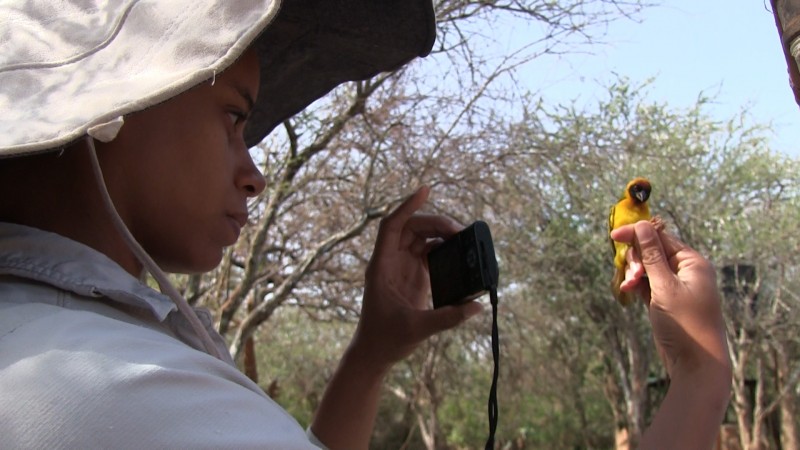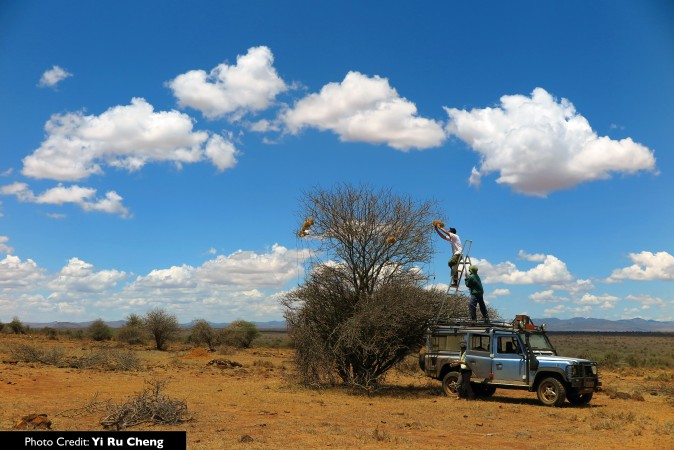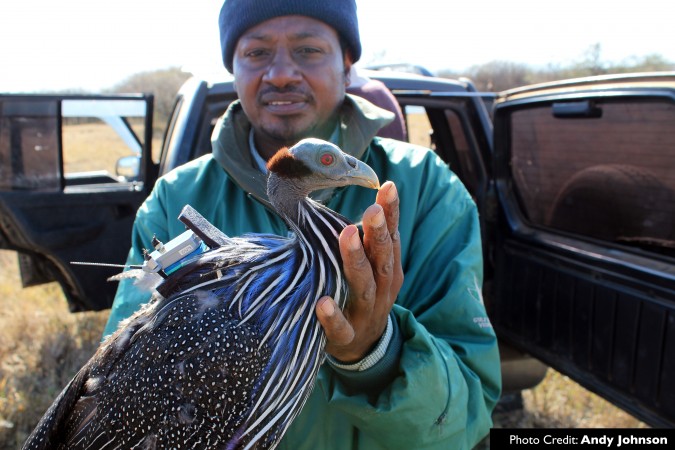Every day, viewers on Explore.org are treated to sights and sounds of numerous bird species at this haven for African wildlife. Mpala is home to the hornbill, defined by a long-curved, often brightly coloured bill, noisy turaco running through tree canopies, the singing White-browed Sparrow-Weaver
busy building nests in their colonies, the bright blue on black vulturine guinea fowl, Africa’s largest owl, the Verreaux’s eagle-owl and the superb starlings with their dark heads sticking out of glossy blue hoods.
The excellent audio quality of the live streaming video on Explore.org’s live cams emphasise a soundscape constantly dominated by songs of our numerous bird species. These are the sounds that Mpala students and researchers wake up to each morning.
Every year, researchers drawn from institutions spread across the globe find their way to Mpala. Out of the many scientists on campus, a sizeable number is keen on birds. Together with their assistants, they are engaged in daily knowledge-gathering activities including netting, extraction of samples, colour coded banding, GPS tagging, field observations, lab experiments and photography among others.
“I am interested in social dynamics, breeding systems and hierarchies in the vitelline masked weaver colonies.” Stepanie Wheeler, University of Florida
Stephanie Wheeler, from the University of Florida, plays an intricate game with vitelline masked weaver numbers, beaks, black and yellow feathers, as she seeks to establish social dynamics and breeding systems in their colonies. For Yi Ru Cheng, a researcher from Columbia University and a team from Academia Sinica in Taiwan, the Mpala landscape offers unlimited study resources in the thousands of nests woven by grey-capped social weavers. Past and ongoing studies on vulturine Guinea fowls, hornbills, superb starlings among other bird species form part of the many research projects at Mpala.
“Birds play a very important role in the savanna ecosystem.” Yi Ru Cheng, Columbia University
Another one of Mpala’s bird projects is the vulturine Guinea fowl project. The research aims to investigate collective movement and decision-making in this gregarious species. The project has colour-banded almost 200 birds and deployed 11 GPS-tags across several groups residing on Mpala.
Mpala’s bird diversity not only attracts students and researchers but most recently, we had the honour of hosting lifelong naturalist and ornithologist, Dr Dale Zimmerman. Interestingly, we discovered that in a career spanning over 60 years in East Africa, the renown ornithologist has only seen the African finfoot a few times.
Viewers at Explore.org are fortunate enough to have periodic sightings of this rare and reclusive bird at Mpala. During Dale’s visit, we recorded an interview with the “Birdman,” as he is popularly referred to for his extensive work that includes paintings and East Africa’s definitive guide to birds, Birds of Kenya and Tanzania.
“You cannot conserve something you don’t know, or that you don’t love.” Dr Dale Zimmerman, Ornithologist
Through Mpala’s commitment to science, education and conservation, we believe students and researchers will continue to collect, discover and produce knowledge for today’s and tomorrow’s generations. For viewers and camera operators on Explore.org, we can be assured of endless sounds and displays of the extraordinary birds that rule our skies.
Peace,
Victor Kasii @mpalalive






